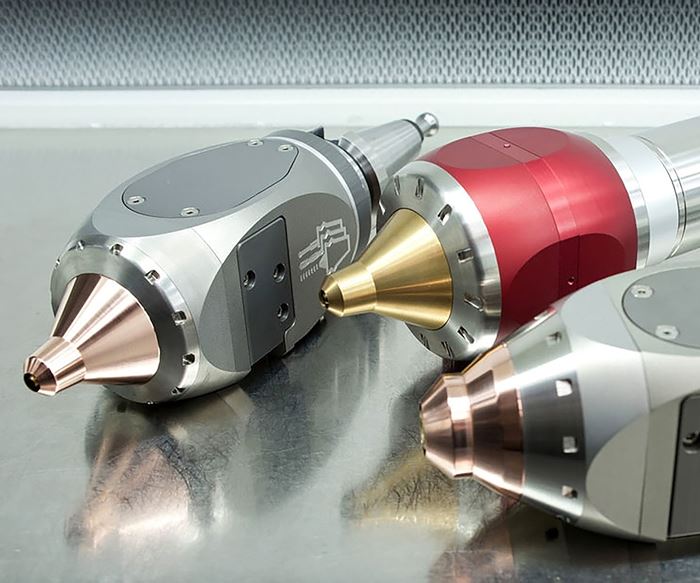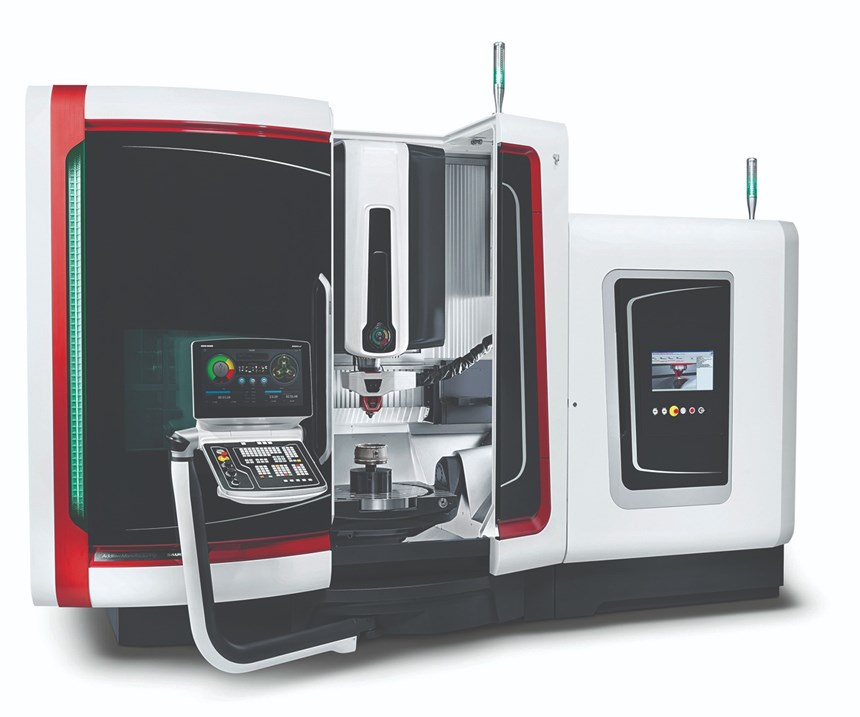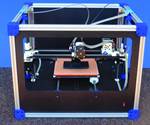The manufacturing industry will always pursue streamlined solutions that lower costs, improve quality and increase profits. Hybrid manufacturing has the potential to do all three. Today, hybrid manufacturing most often refers to the combination of metal additive and subtractive manufacturing in one machine. To better understand the benefits of a combined technology, it is vital to first understand the limitations of 3D metal printing in its current state.
Metal parts created using 3D printing typically need to undergo some form of post-machining. Several factors result in the need for post-machining. First, 3D-printed metal parts have relatively poor surface quality because they are built layer by layer, and they often need supports to ensure that a part does not collapse during its build. Unlike plastic 3D printing, the supports for metal parts cannot be simply snapped off of the part. Instead, the supports must be machined or ground off of the part and the remaining surface must be finished for the sake of the part’s appearance.
Also, post-machining may be needed if there are fine features that will impact the part’s functionality. For example, if the design calls for threaded holes, then it is necessary to tap and thread those holes in a separate operation. This is also true for any surface that must be very flat and smooth, like a cylinder or a gasket seal. Roughly two-thirds of all 3D-printed parts require some form of secondary machining before being finished.
Hybrid Benefits
While secondary machining does not always involve CNC machining, that is the most common process that machinists use on 3D-printed parts. Right now, the majority of these parts are 3D-printed on one section of the shop floor and must then be moved to another department for CNC machining. This is why hybrid manufacturing is worth consideration. It offers the ability to make a finished part in one setup.
When milling and turning are on the same machine as the printing, machinists can reduce setup time: one machine means one setup rather than two. Very complex and high-value parts, such as conformal-cooled injection mold inserts, may benefit considerably.
Setting up a single machine also eliminates the possibility of specifications being misinterpreted in between processes as the part is passed from one machinist to another, who must input a whole new set of parameters into his or her machine. Combining these two processes can reduce labor hours and turnaround time, creating benefits for both the manufacturer and the customer.
Being able to optimize floor space for multiple operations is another advantage of a hybrid machine. Powder-bed, metal 3D printing requires specific fire, health and safety precautions because of the fine metal powder that is used in the process. On their own, 3D printers need dedicated, sealed spaces with negative air pressure and air purification equipment. These measures prevent the powder material from leaving the enclosure.
A hybrid approach would also enable a new strategy for building certain parts. CNC machining by far remains a quicker and more cost-effective process for metal part creation. Depending on a part’s design, having both capabilities within a single piece of machinery would make it possible for most of a part to be machined with CNC machining, and then complex features would only be 3D-printed when it makes sense to do so. Imagine a part that has a threaded hole deep inside of a recessed pocket. It could be CNC machined and then 3D-printed on top of that. The two approaches are currently considered separate process steps that are taken in series. In the future, it will be possible to engage in those steps in an alternating fashion, leveraging the advantages of each process solely on the features that require them. This would truly enable the production of parts that were previously impossible to make.
Machinists could also use this approach to machine a part out of one type of metal and then 3D print on top of it with a different type of metal. This hybrid strategy has the potential to open up the technology to various new applications, such as bi-metal mold tools that combine superior thermal properties with high strength and durability. For example, heat-treated tool steels are more durable for long-lasting injection mold tools, but aluminum has superior thermal properties. Combining aluminum and steel would make a stronger mold that can be heated and cooled faster.
This is why hybrid manufacturing is worth consideration. It offers the ability to make a finished part in one setup.
Technology Outlook
The development of today’s hybrid machines has taken many forms. Some equipment makers are designing all-in-one machines. These units are large, have a big footprint on the shop floor and can be quite expensive, so manufacturers need to be sure they can justify the expense for this kind of investment.
As an alternative, other developers are delivering solutions for preexisting equipment. For example, a self-contained laser cladding head that is used as an add-on makes it possible to retrofit metal 3D printing capabilities to an existing CNC machine. It is important to understand that this type of laser beam melting only works in applications that do not require cleanroom conditions. However, this option is less expensive, uses current equipment and floor space and can facilitate a manufacturer’s transition to this new process without a huge cash investment.
While hybrid manufacturing technology presents numerous benefits, it is still largely unproven because of a lack of applications to justify the cost of the machinery. However, as the technology further develops and undergoes testing, the benefits will become clearer and its accessibility to the marketplace will improve.
About the Contributor
Chloe Kow is additive manufacturing manager at Star Rapid.
Related Content
Solving Mold Alignment Problems with the Right Alignment Lock
Correct alignment lock selection can reduce maintenance costs and molding downtime, as well as increase part quality over the mold’s entire life.
Read MoreOEE Monitoring System Addresses Root Cause of Machine Downtime
Unique sensor and patent-pending algorithm of the Amper machine analytics system measures current draw to quickly and inexpensively inform manufacturers which machines are down and why.
Read MoreLeading Mold Manufacturers Share Best Practices for Improving Efficiency
Precise Tooling Solutions, X-Cell Tool and Mold, M&M Tool and Mold, Ameritech Die & Mold, and Cavalier Tool & Manufacturing, sit down for a fast-paced Q&A focused on strategies for improving efficiencies across their operations.
Read MoreThe Trifecta of Competitive Toolmaking
Process, technology and people form the foundations of the business philosophy in place at Eifel Mold & Engineering.
Read MoreRead Next
Democratizing 3D Printing of Injection Molds
Full-service design and mold delivery, moldmaking materials and a low-cost, high-precision printer minimize the technical risk of 3D-printed mold tryout.
Read MoreHow to Use Strategic Planning Tools, Data to Manage the Human Side of Business
Q&A with Marion Wells, MMT EAB member and founder of Human Asset Management.
Read MoreAre You a Moldmaker Considering 3D Printing? Consider the 3D Printing Workshop at NPE2024
Presentations will cover 3D printing for mold tooling, material innovation, product development, bridge production and full-scale, high-volume additive manufacturing.
Read More




























